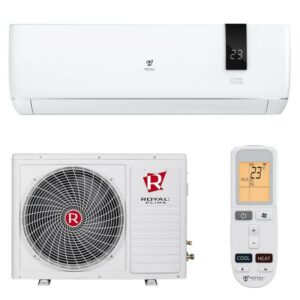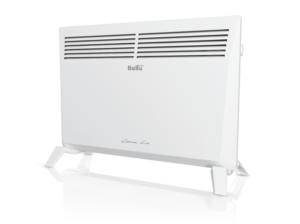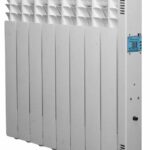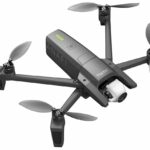How does an air conditioner work for heating? Key Features
After reading the material below, you will learn the name of an air conditioner that heats and cools, the principle of operation of an air conditioner for cooling, the principle of operation of an air conditioner for heating, which is better for heating: an air conditioner or a heater.
Air conditioning - what is it, purpose, types, design. What are the heating and cooling models of air conditioners called?
An air conditioner is a microclimate technology for regulating the climate in an enclosed space. An air conditioner can ventilate/ventilate, filter, cool, and heat air. The purpose is to create comfortable microclimate conditions in the room.
There are two types of air conditioners:
- Monoblock
- Split systems or two-block

Air conditioners that can heat and cool air are called split systems.
Monoblock models are solid metal boxes, one part of which is located inside the house and the other outside. Design features include a pipeline, compressor, fans, control panel, and condensate container.
Split systems consist of two blocks - external and internal. The external one is installed outside the room, the internal one inside. The indoor unit consists of:
- Housings
- Front panel
- Sensors
- Air filter
- Air intake grilles
- Exhaust air holes
- Fan
- Pipeline (part of the refrigeration circuit with freon inside)
Depending on the model, the thermostatic valve is located either in the internal part of the split system or in the external part.
External unit:
- Freon pipeline
- Compressor
- Fan
- Frame
- Air intake grille
- Air outlet grilles
The content of the article
Operating principle of the air conditioner
The operating principle of the air conditioner is based on the property of liquids to absorb and release heat, depending on the state of aggregation and pressure. Such liquids are called refrigerants.
First, the air conditioner blows air from the room into itself with a fan. At this time, gaseous freon goes to the compressor in the external unit. The compressor compresses it, the refrigerant's pressure increases, and it heats up. Afterwards, a fan blows it with street air, which takes heat from the gas, and the freon turns into a cold liquid. It is piped through a thermostatic expansion valve into the interior of the air conditioner. There, tubes with cold liquid freon blow air from the room. Freon absorbs its heat, becoming gaseous again. Cold air comes from the outlet.
The principle of operation of the air conditioner in heating mode
The operating principle of the air conditioner in heating mode is the same as the standard one. Only the direction of freon is reversed - the thermostatic valve changes the flow of refrigerant in the refrigeration circuit.
Liquid freon is pumped into the external unit, where a fan blows it with street air. The refrigerant reaches the compressor. It also compresses it, increasing the pressure. Because of this, freon turns into a hot gas. It enters the indoor unit through the pipeline, where a fan blows air from the room.The air is heated from the freon tube and leaves the air conditioner.
Which is better: air conditioner or heater?
Often during the off-season and winter, people use various heaters for heating. It's convenient, comfortable and familiar. But they have a couple of disadvantages - low heat transfer and high consumption. For example, the consumed and output power of an oil heater is 2 kilowatts. Such high consumption is due to the heating element - a tubular electric heater. He spends the most energy.

Air conditioners do not have heating elements. All energy is spent on powering the fans, compressor, and indicators. That is, the energy consumption of an air conditioner is lower than that of heaters - 700 watts. The air conditioner produces almost 3 kilowatts.
So is air conditioning better? No. The air conditioner consumes less energy and produces more power. But this is due to the fact that it gives off heat to the air, and not to the objects in the room. Heaters heat objects, turning them into secondary heat sources - after heating, they give off heat to other objects, users, and air.
For heating, it is better to use air conditioning in early autumn/spring. At this time, it is not yet very cold, and the device will create a comfortable air temperature. Heaters are more suitable for late autumn/spring.





